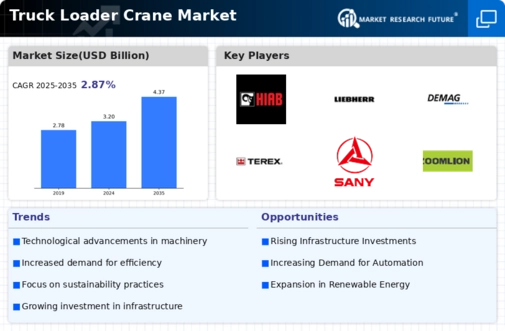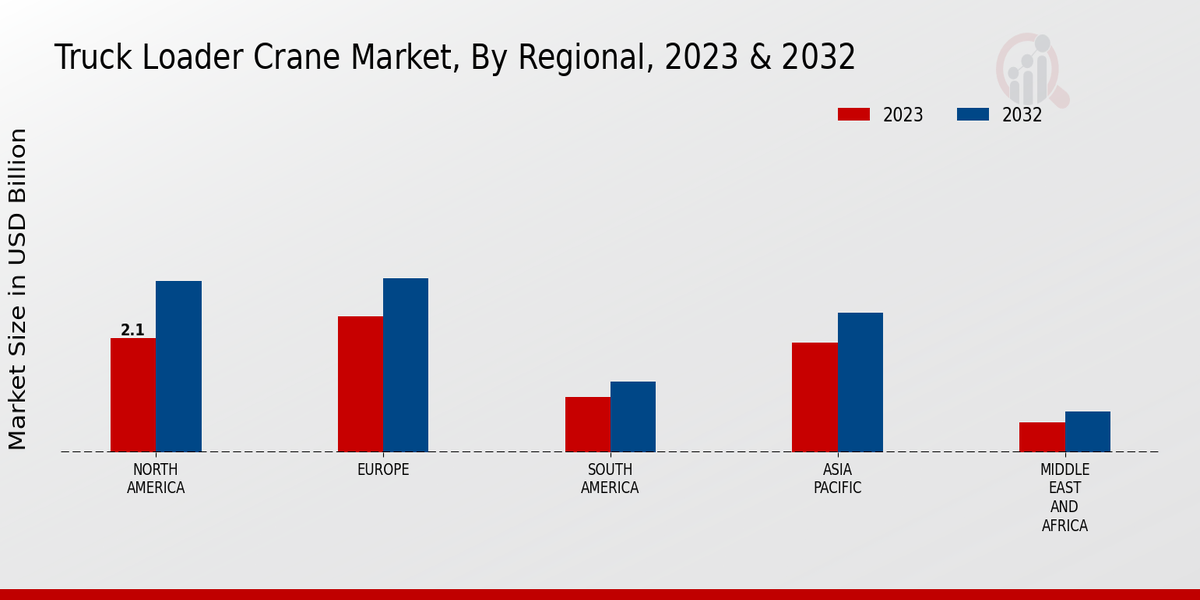Truck Loader Crane Market Summary
The global truck loader crane market is projected to grow from 3.20 USD billion in 2024 to 4.37 USD billion by 2035, indicating a steady expansion.
Key Market Trends & Highlights
Truck Loader Crane Key Trends and Highlights
- The market is expected to experience a compound annual growth rate (CAGR) of 2.88 percent from 2025 to 2035.
- By 2035, the market valuation is anticipated to reach 4.37 USD billion, reflecting a robust growth trajectory.
- in 2024, the market is valued at 3.20 USD billion, establishing a solid foundation for future growth.
- Growing adoption of advanced lifting technologies due to increasing demand for efficiency is a major market driver.
Market Size & Forecast
| 2024 Market Size | 3.20 (USD Billion) |
| 2035 Market Size | 4.37 (USD Billion) |
| CAGR (2025-2035) | 2.87% |
Major Players
Fassi, HIAB, Liebherr Group, Demag Cranes, Terex, Sany Group, Zoomlion, Palfinger, XCMG, Tadano, Grove Cranes, Kobelco Cranes, Jekko, Manitowoc





















